The Taste of Things & pot-au-feu
The best new food movie has arrived, an unabashed ode to epicurean pleasure.
The phrase “food movie” has always felt a bit trivial to me. They’re always about something more. Foo-ood, moo-vee. Toddler vowels. It’s not so often that one of these comes along though. I would know; you can’t exactly build an entire newsletter around traditional food movies, at least the ones explicitly situated in the realm of cuisine and cooking: Ratatouille (2007). Big Night (1996), Babette’s Feast (1987). Tampopo (1985). More recent flicks have focused on restaurant culture and chefs—The Bear. The Menu. The one with Bradley Cooper. The one with John Favreau. The one with Aaron Eckhart (remember him?) and the one where Nic Cage goes John Wick over a hog.
By my count, the last traditional food movie was Julie and Julia (2009). So today is a big day on moviepudding. The latest entry to the canon has arrived, thanks to French-Vietnamese filmmaker Trần Anh Hùng. His new film, THE TASTE OF THINGS stands as a sincere tribute and sumptuous ode to the gourmet lifestyle—very fitting to our food-obsessed culture.
In the movie food is everywhere, as text and subtext, lurking in every scene, bathed in lighting the color of melted butter, and lavished with the adoration by an enraptured camera. Like last year’s Frederick Wiseman doc, Menus-Plaisirs Les Troisgros, it won’t necessarily make you hungry; it piques the more elevated corners of your mind. You’ll leave with an intellectual hunger for refinement—and a very strong desire to cook the most elaborate dish you can manage, most likely for a loved one. The film is out in NYC now, and has been strategically set to open nationwide on Valentine’s Day.
The Taste of Things begins in the garden (also like the Wiseman doc). Celery root mired in dirt, lettuce heads hoisted from the ground. But very quickly it brings us into the kitchen, where cooking becomes a balletic, high wire act. Right after breakfast—an omelet, consumed of course, with a spoon— Dodin, his personal cook Eugenie, and their two helpers immediately set to work on preparing lunch. (As character says the only thing worse than hunger is not knowing what/when you’ll eat.)
This affair occupies roughly the first thirty minutes of the film. Butter is clarified, fish is gutted, mirepoix cooks down, and liquids are strained and strained again. Tran captures the serene, well-established choreography of the cooks with an equally graceful camera, and holds us in a bit of gastronomic suspense as we guess at what they’re making.
for lunch:
pristine consommé
seafood vol-au-vent, large-format, cut into slabs (think of it as a pot-pie, constructed with towering puff pastry)
turbot fed a bottle of white, coddled in a milk bath, and dressed in thick hollandaise
rack of veal loin, surrounded by braised lettuces.
baked alaska—in French, a “Norwegian omelette”— flambeed table-side.
The film generally focuses on the courtship between Dodin and Eugenie (former couple Benoit Magimel and Juliette Binoche). The contextual details are hazy: it is sometime in the late 19th century in the French countryside; as are the particulars of character: Dodin fits into one of those high-echelon stations of life where he presumably doesn’t need to work, hosting his entourage—excuse me suite—and for the lavish meals, and Eugenie’s provenance and history remain a mystery. To gather the specifics you’d have to read Marcel Rouff’s 1924 novel The Life and Passion of Dodin-Bouffant, Gourmet, on which the film is based.
For the better part of a decade, Eugenie has mostly kept things business, declining Dodin’s advances. Until now. In her autumn years, she concedes to the warmth of romance and they glide into each other's arms, with the same effortlessness of Eugenie smoothing cream onto cake. There are, of course, complications: Eugenie is ill. And so Dodin does what anyone should do; he cooks for her.
If this sounds like the B-plot given center stage, you're not wrong. And if it sounds a bit predictable and a little staid, I don't disagree. The Taste of Things is for the most part an exceedingly middlebrow movie, uncannily reminiscent of Miramax films past—a “foreign” film with widespread appeal. The kind you’d watch with your parents. (Ironically we know by now that American audiences as a whole have progressed in terms of their cultural discernment. France’s strategy of picking this film to represent the country at the Oscars instead of Justine Triet’s Anatomy of a Fall proved a major error.)
Sex is absent from the film. It is suggested and intimated, and its connection to romance conspicuously conveyed when the image of a poached peach fades to a shot of Eugenie’s bare ass. The cook and her lover commune through the food, preparing it, consuming it, their horniness elegantly sublimated into stirring and whipping, and manipulating copper pots and cast-iron pans around the stove and butcher block.
If all that seemed a bit too on the nose, the film reveals an understated feminist inclination in its final scenes. Should they wed, Eugenie asks to be acknowledged and remembered by Dodin foremost as his cook, rather than his wife. Unlike the characters in traditional food movies who cook out of necessity or passion, here they do so purely for their own personal gratification, more than for labor or love.
The Taste of Things is constructed on ordinary foundations and story mechanics, but where it stands out is as a fierce champion of the gourmet and the artistry of taste. A deep appreciation of flavors, the ability to partake in and comprehend the utmost refinement, represents a distinctive form of art in and of itself.
*It should be noted that a gourmet is not exactly the same as a gourmand, who likes food yes, but whose pleasure might stem from quantity and richness over quality.
On David Chang’s podcast Jerry Saltz said that pleasure is an important form of knowledge. In the Wiseman film, chefs are recast as artists using their hands to turn out imaginative culinary creations. In Tran’s film, the focus shifts away from craft and execution (present and besides the point) to the act of savoring and relishing. The emphasis is on the palate.
Knowing what tastes good takes skill. It is hard work. Dodin tells a young girl who hopes to be his apprentice that no gourmets are made at age 40. It takes years to know what pops, to be able to recognize the juniper berries and currant jelly folded into the sauce bourguignotte. Taste = culture and time, nurtured by both gastronomical factualities and imperfect memories. Those who find resonance in that sentiment, will find the Tran’s film to be not merely one of reverence but pure transcendence.
French food in NYC
Restaurants like Boulud, Bernadin, and the newer spot L’abeille embody the essence of nouvelle cuisine and something more modern and Bocuse-like, which we get the slightest glimpse of in The Taste of Things when Dodin cooks Eugenie dinner, which includes an ethereal deconstructed, petal-strewn dessert.
To more closely align your cravings with the film, you might head somewhere more classic, like La Grenouille or Le Coucou, or one of the more casual bistros that populate today’s dining scene, all the better to envelope yourself in a thick coating of mother sauce. Libertine and Cafe Chelsea, with their oeufs mayo and ravioles du dauphiné, respectively. Frenchette, or the team’s newer restaurant, Le Rock, which I’ll get to eventually. One of my personal favorites: Le Crocodile.
There’s of course Le Ripaille, Le Gratin, and all of Keith McNally. But for a Baked Alaska, you need to head to Gage and Tollner.
Pot-au-feu or no…
“Boiled meats,” another wanting phrase. I can’t think of any two less magical words strung together in the English language. They are in essence what make up pot-au-feu, which closes out the film and was also its original title out of Cannes before it took a turn for the obvious.
One of the national dishes of France, pot-au-feu, wasn’t created by a master chef but as the accidental result of peasant indolence declares this somewhat retrograde NYTimes article by a man who has never-ending soup situation going on with his pot-au-feu. Careme called the dish the principal food of the working class of the nation. So when Dodin proposes serving it to the prince of Eurasia, his friends collectively raise their eyebrows, more out of intrigue than fear. They’re keen on his abilities to transform the inelegant dish, inglorious, scented with grease (Dodin’s words) into something fit for royalty.
There was no such grease to speak of when I made it, since, integrally, it doesn’t call for any searing. The meat hangs out in the pot all afternoon, and is cleansed of fat and blood. There are so many ways as to go about making pot-au-feu that the Wiki entry has a combinatory chart of what famous chefs prefer in terms of meat (beef, chicken, pork) and vegetables additions.
Beef is the anchor, as are carrots, onions, leeks, and bouquet garni (bay leaf, thyme, and parsley) for the broth. According to Ioana Hercberg, the chef/owner of La Cantine—and, more importantly, a Parisian—bone marrow is a must. She was right. It gives the gift of flavor, and you can scoop out the jellied marrow onto toast when it’s done cooking for a perfect snack.
After that, all bets are off, within reason. Parsnips, turnips, rutabaga. Potatoes, if you want. Savoy cabbage if you dare. (You cook these only after the meats are finished, so they don’t get soggy.) Don’t forget an “onion stuck with cloves,” which I only just learned is not a peculiarly picked allium, but when you insert dried whole cloves into an onion like a nail.
I did it all, cribbing directions for what suited my needs, piecing together recipes from James Beard and Food and Wine—one “classic” and one “easy” from a Ludo Lefebvre (who actually worked in the kitchen of Pierre Gaignaire, who served as the food consult in the film).
I threw out the ones that called for deglazing and searing, which didn’t seem of the right mindset. And I made the stock beforehand; that seemed non-negotiable. I boiled bottom round and short rib in it, too, since I had them on hand, and stored it with liquid the night before. (According to
, seasoned food writer and American in Paris, this was not the move. I wish I’d found her recipe—the most thorough one I’ve seen yet—before I started this journey.)The next morning I layered carrots leeks and onion underneath more meat—shanks, brisket, and marrow bone, which I wrapped in cheese cloth because someone said it would prevent any precious marrow from leaking, but everything looked in tact. In the movie I think Dodin boils his marrow in a separately, and lets it all fly out into the soup afterward.
The end results were…underwhelming. The short rib was properly soft, the brisket too, the round less so. All cuts though were sapped (perhaps inevitably) of their beefiness, which leached into the broth, which quite incredible. It’s no wonder this is eaten with sour cornichons, coarse mustard, and sinus-flushing horseradish grated into creme fraîche.
I ended the meal with despairing obligation to finish it all, questioning having gone all out and carried on a sense of kitchen munificence instilled in me by my mother… Should I have just made the vol-au-vent???
But with the dawn of another day, everything was right again. The flavors melded into something more robust and all was well again. I took a page from Rachel Roddy, who makes the Italian version bollito misto, and turned the leftover beef into meatballs.






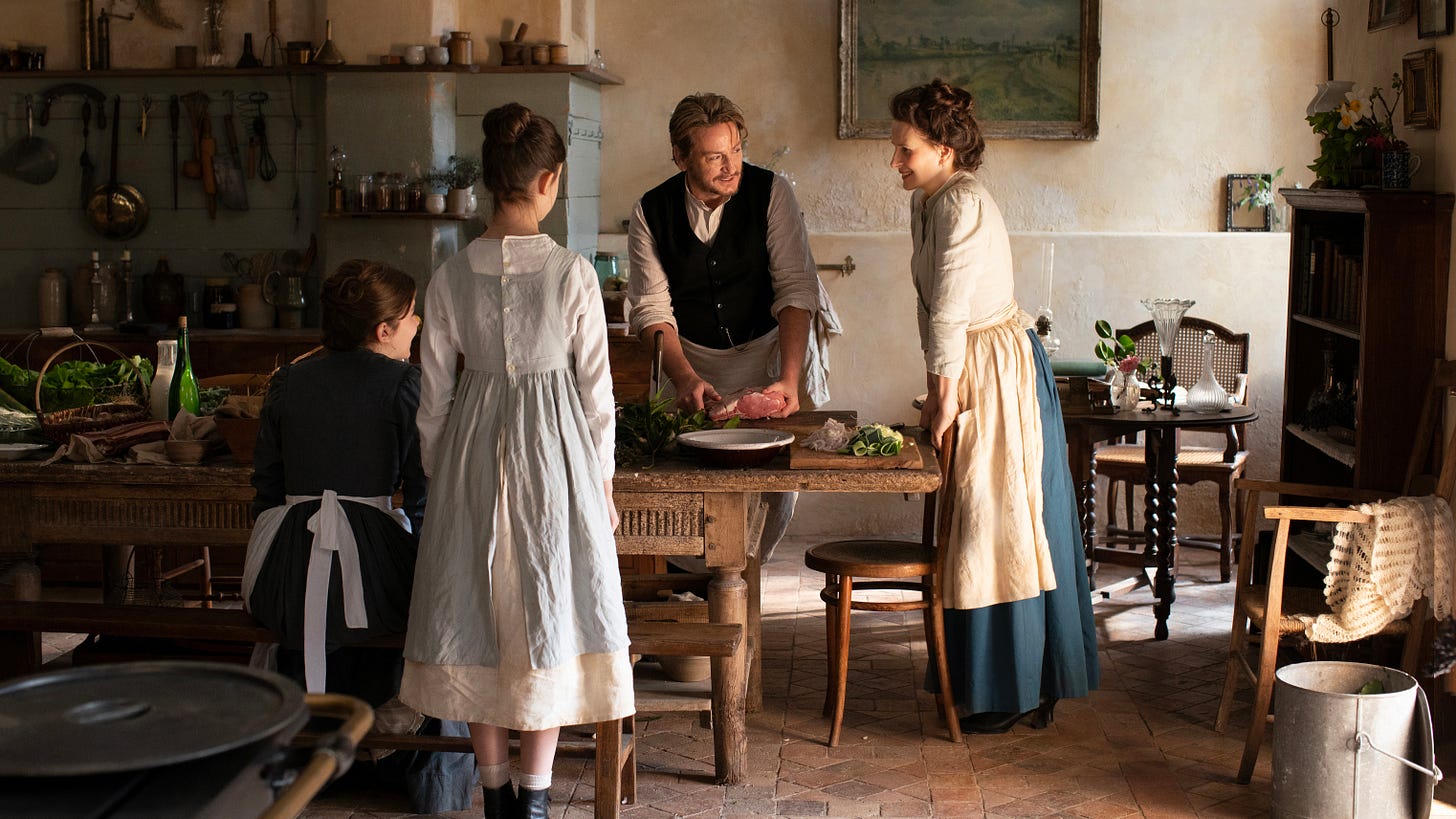
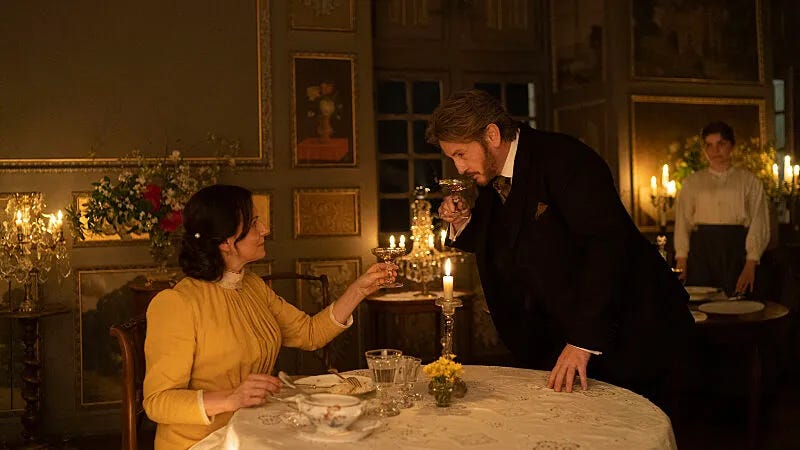
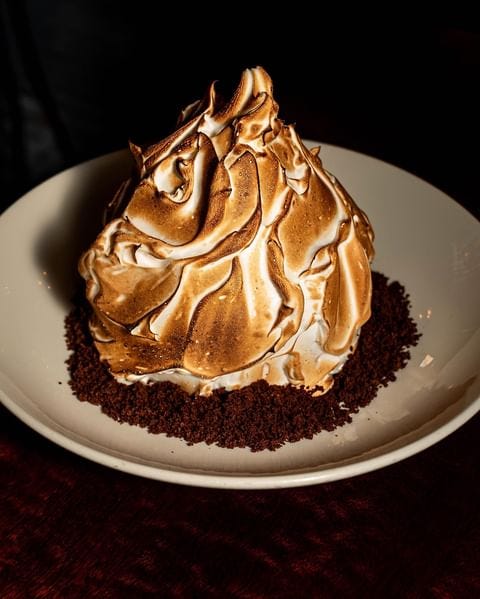
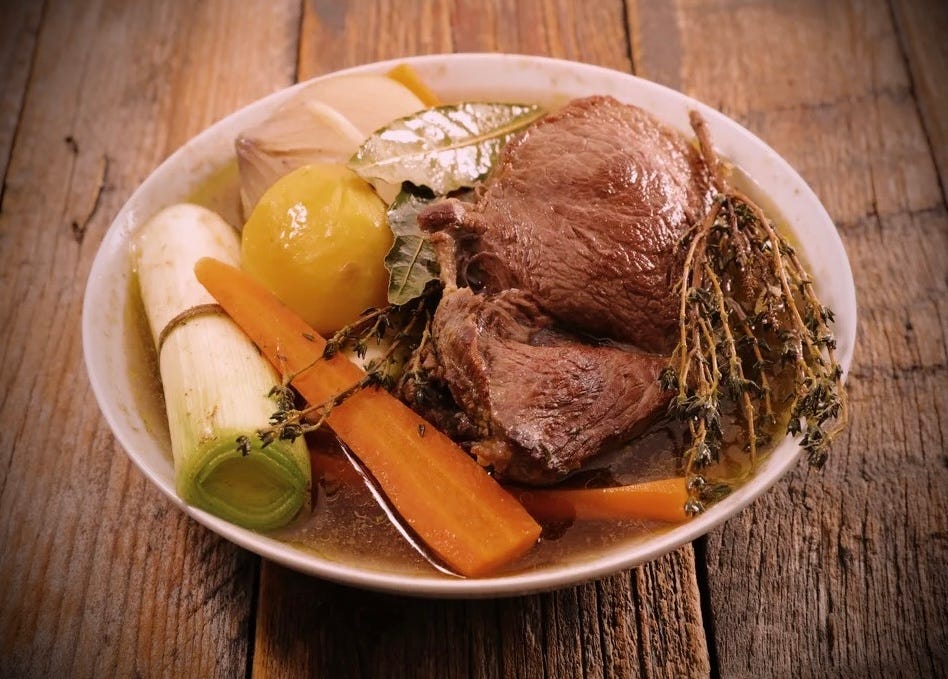
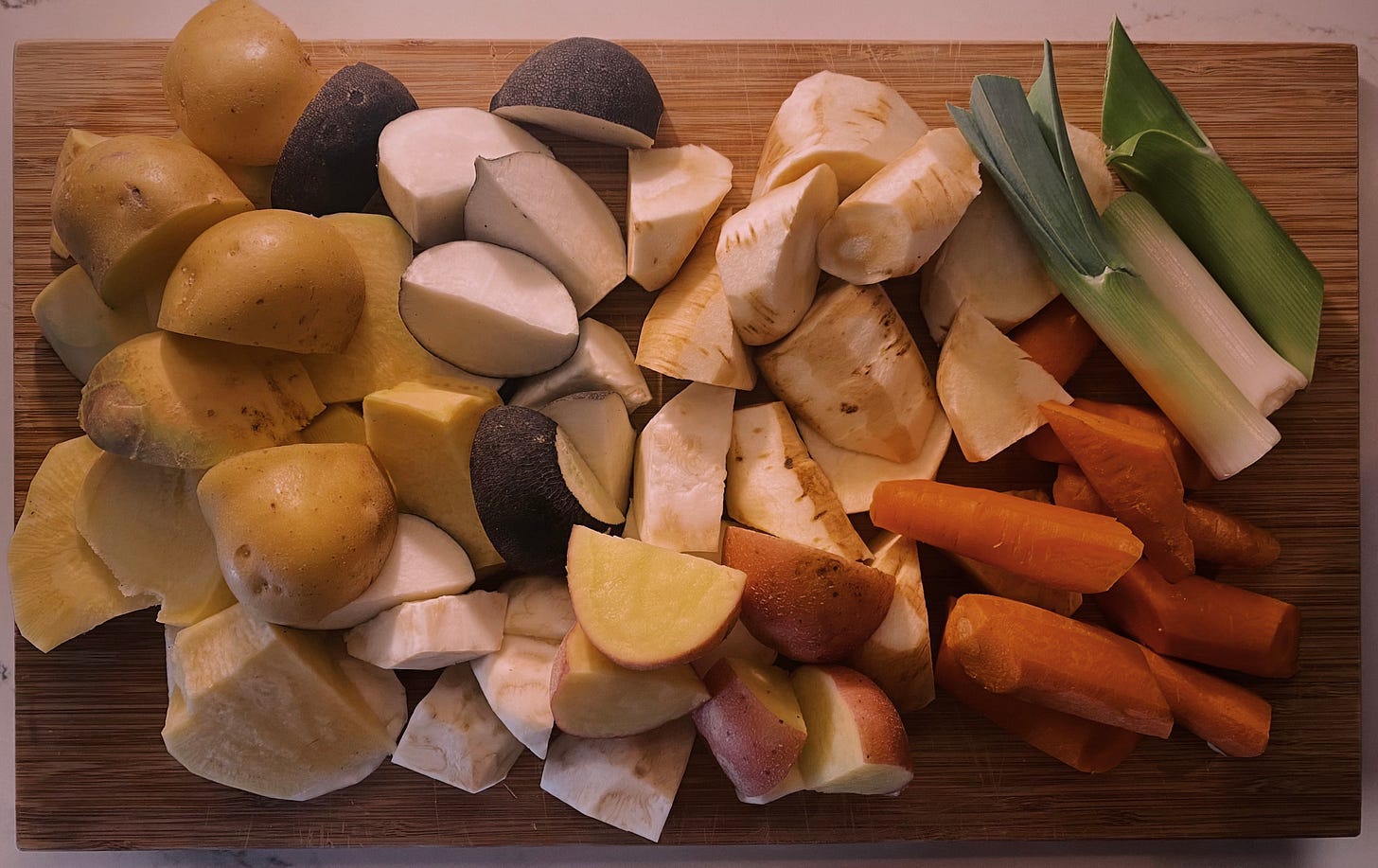
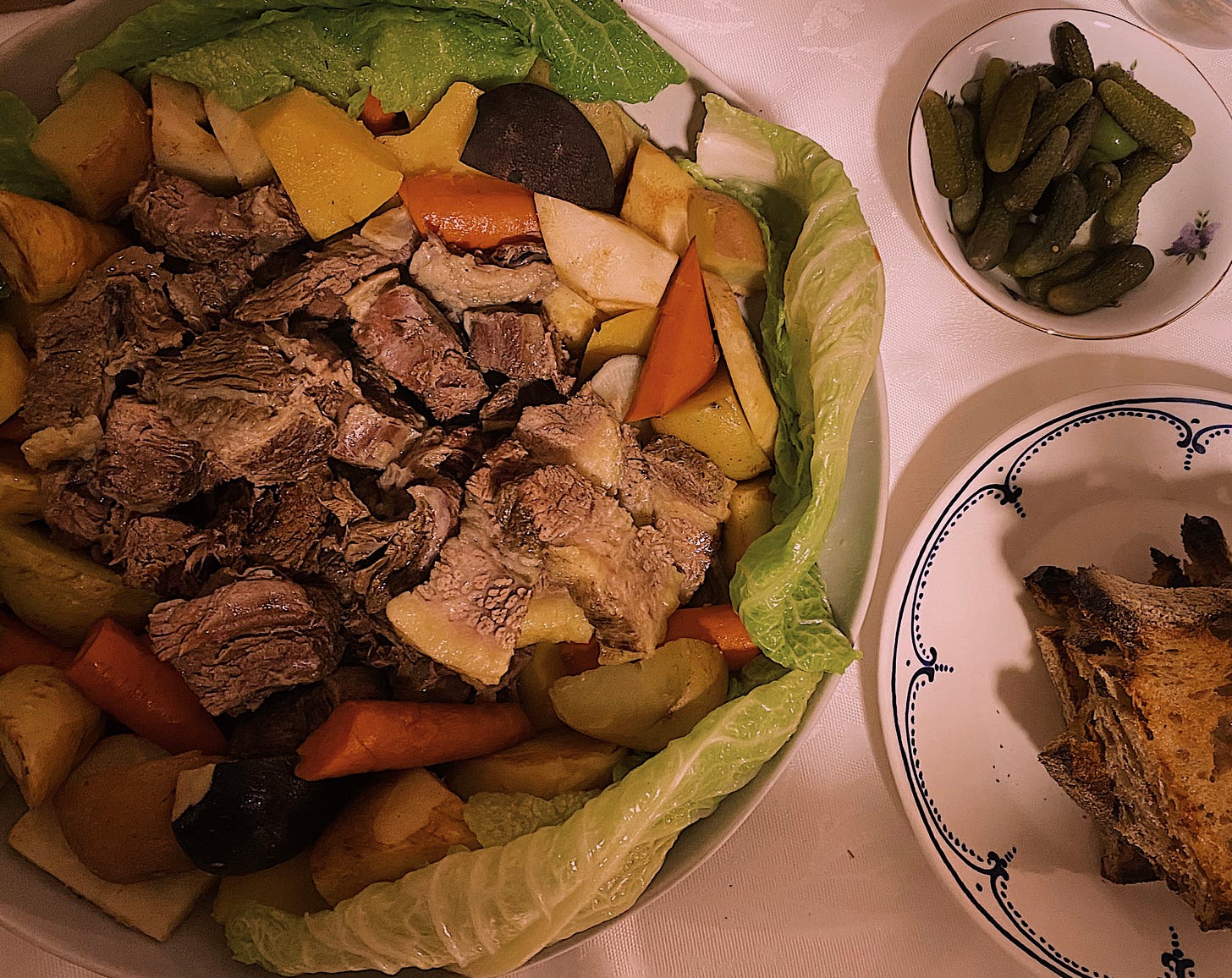
Came back to read this after seeing the movie yesterday and love your thoughts on it. Painfully romantic. Fortunately, I am allergic to red meat, so I could not skip work to make pot-au-feu all day today.
Great, I have to watch this now...